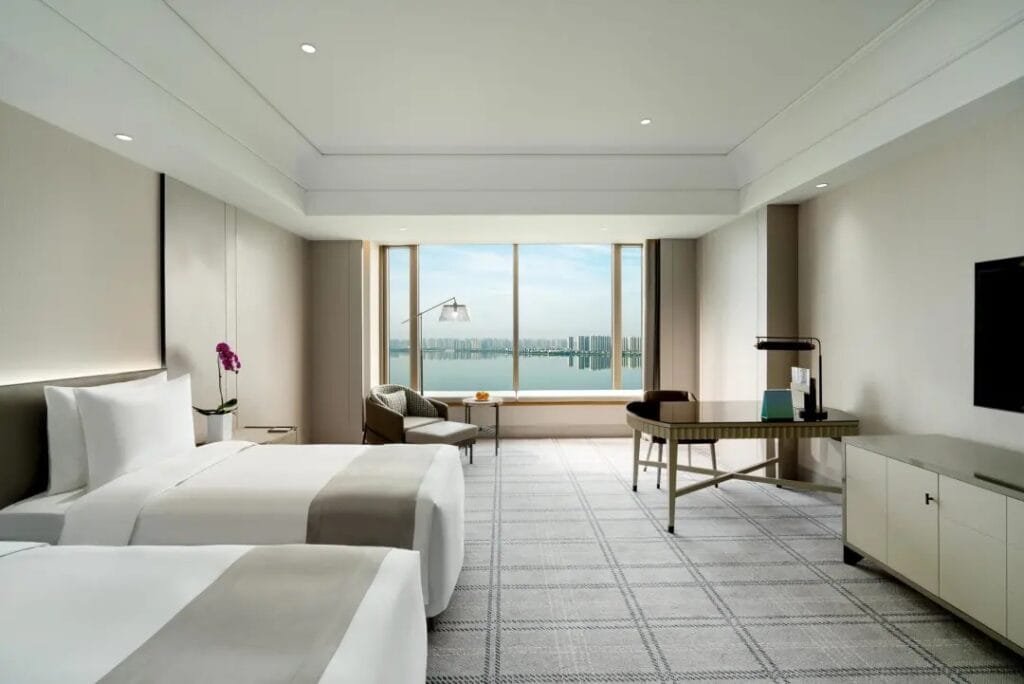
The modern commercial furniture industry demands providers who understand the unique requirements of diverse sectors while delivering consistent quality across all applications. A global furniture solutions provider specializing in office, healthcare, and hotel environments must possess comprehensive expertise, advanced manufacturing capabilities, and deep understanding of sector-specific regulations and user needs. This multifaceted approach enables businesses to partner with a single provider for all their commercial furniture requirements, ensuring consistency, efficiency, and specialized expertise across different project types.
Today’s commercial furniture landscape requires providers who can seamlessly transition between designing ergonomic office workstations, creating infection-control compliant healthcare furniture, and developing aesthetically striking hotel pieces that withstand heavy guest usage. The convergence of these three major sectors creates opportunities for specialized providers to leverage cross-industry knowledge, apply innovative solutions across different environments, and deliver comprehensive furniture programs that address diverse operational requirements.
This comprehensive guide explores the essential components of global furniture solutions, examining office furniture innovations, healthcare compliance requirements, hospitality design trends, and the strategic advantages of partnering with a provider who excels across multiple commercial sectors. Understanding these interconnected markets enables organizations to make informed decisions when selecting furniture partners for complex, multi-environment projects.
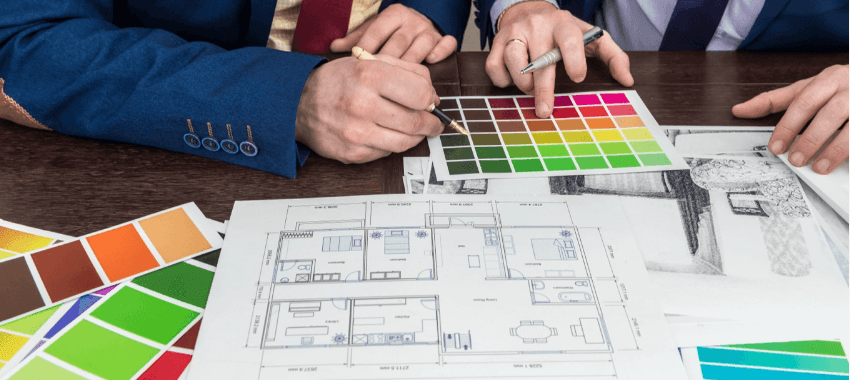
Office Furniture Solutions for Modern Workplaces
Office furniture solutions have evolved dramatically to accommodate changing work patterns, technological integration, and employee wellness priorities. Modern workplace furniture must support diverse work styles, from focused individual tasks to collaborative team projects, while incorporating technology seamlessly and promoting employee health and productivity. Global furniture solutions providers specializing in office environments understand these complex requirements and develop comprehensive systems that adapt to evolving workplace needs.


Lingang Center | Office Project By Hongye Furniture
The shift toward activity-based working has fundamentally changed office furniture requirements. Traditional fixed workstations have given way to flexible furniture systems that support multiple work modes throughout the day. Height-adjustable desks, mobile storage units, and reconfigurable meeting spaces enable employees to choose work environments that match their tasks and preferences, improving productivity and job satisfaction.
| Office Furniture Category | Traditional Approach | Modern Solutions | Key Benefits |
| Workstations | Fixed height desks | Height-adjustable systems | Ergonomic flexibility, health benefits |
| Storage Solutions | Built-in filing cabinets | Mobile storage pedestals | Space optimization, flexibility |
| Meeting Spaces | Formal conference rooms | Flexible collaboration zones | Improved teamwork, space efficiency |
| Technology Integration | Basic cable management | Integrated power/data systems | Clean aesthetics, easy access |
| Acoustic Solutions | Enclosed offices | Sound-masking furniture | Open plan compatibility, privacy |
Technology integration represents a critical component of modern office furniture design. Successful providers develop furniture systems with built-in power distribution, USB charging capabilities, and wireless charging surfaces that eliminate cable clutter while ensuring employees have convenient access to power and connectivity. Advanced solutions include smart furniture with sensors that monitor usage patterns and environmental conditions, providing data for space optimization decisions.
Healthcare Furniture Expertise and Compliance
Healthcare furniture supplier requirements extend far beyond aesthetic considerations, encompassing infection control, patient safety, regulatory compliance, and specialized functionality that supports medical procedures and patient care. Healthcare environments demand furniture solutions that withstand frequent cleaning with harsh disinfectants, resist bacterial growth, and maintain appearance despite intensive use while supporting the diverse needs of patients, families, and medical staff.
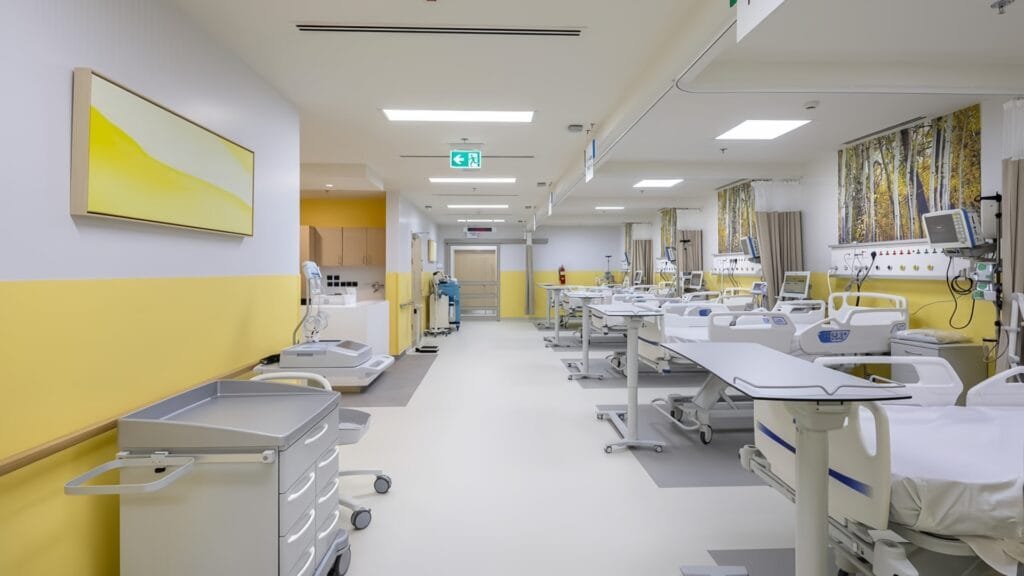
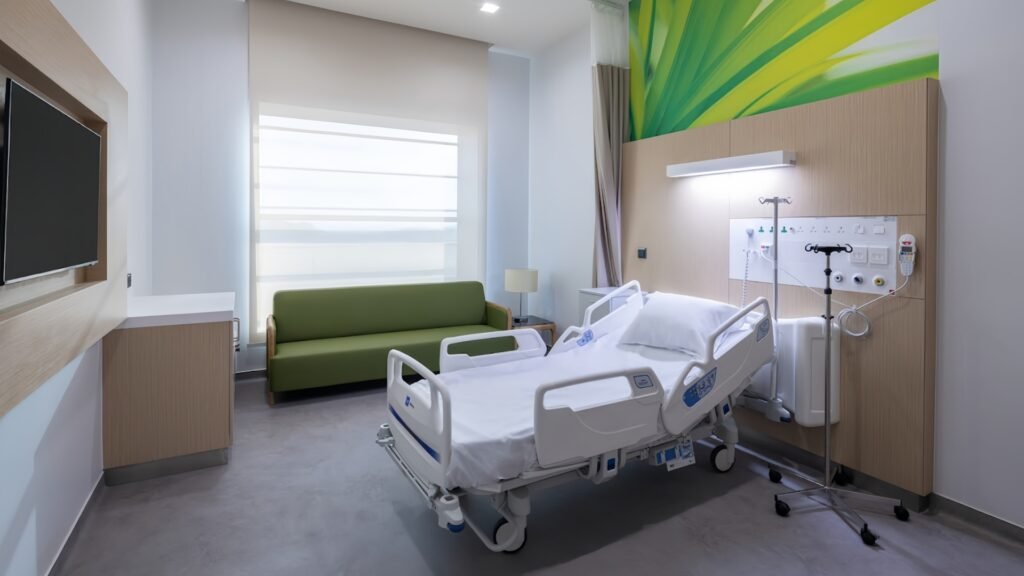
Saudi German Hospital Makkah | Medical Project Solution By Hongye Furniture
Infection control considerations drive healthcare furniture design and material selection. Successful healthcare furniture features antimicrobial surfaces, seamless construction that eliminates bacteria harboring locations, and materials that maintain integrity despite frequent cleaning with hospital-grade disinfectants. Advanced solutions incorporate silver ion technology, copper-infused surfaces, and specialized coatings that actively reduce microbial growth.
| Healthcare Environment | Furniture Requirements | Specialized Features | Compliance Standards |
| Patient Rooms | Comfort, easy cleaning, durability | Antimicrobial surfaces, fluid-resistant materials | FDA compliance, infection control protocols |
| Waiting Areas | High durability, easy maintenance | Stain-resistant fabrics, reinforced construction | ADA accessibility, fire safety codes |
| Surgical Suites | Chemical resistance, mobility | Stainless steel construction, locking casters | Sterile environment compatibility |
| Intensive Care Units | Technology integration, flexibility | Integrated monitoring systems, adjustable height | Life safety codes, electrical standards |
| Rehabilitation Centers | Therapeutic support, safety | Grab bars, non-slip surfaces, adjustable features | ADA compliance, therapeutic standards |
Patient safety requirements influence every aspect of healthcare furniture design, from rounded corners that prevent injury to weight capacities that accommodate bariatric patients. Specialized healthcare furniture includes anti-ligature designs for behavioral health units, pressure-relieving surfaces for extended bed rest, and transfer-friendly seating that assists patients with mobility limitations.
Hotel Furniture Projects and Hospitality Excellence
Hotel furniture projects require unique combinations of aesthetic appeal, durability, and cost-effectiveness that can withstand intensive guest usage while maintaining brand consistency and visual appeal throughout the property lifecycle. Hospitality furniture must balance style, comfort, and durability while meeting safety regulations and supporting efficient housekeeping operations that maintain cleanliness standards in high-turnover environments.

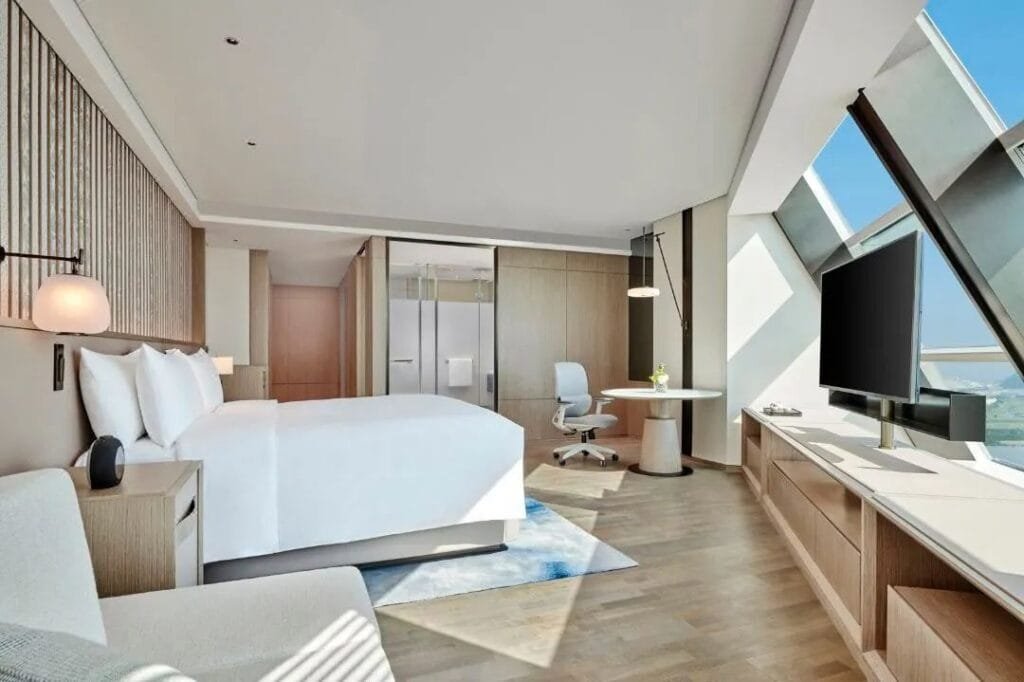
The Hilton DoubleTree Hotel | Hospitality Project Solution By Hongye Furniture
Durability requirements for hotel furniture exceed most other commercial applications due to intensive daily use, varied guest behaviors, and the need for extended product lifecycles that support hospitality investment models. Hotel furniture must withstand frequent cleaning, resist stains and damage, and maintain structural integrity despite constant use while supporting the aesthetic standards that influence guest satisfaction and property reputation.
| Hotel Furniture Category | Durability Requirements | Design Considerations | Maintenance Features |
| Guest Room Seating | 50,000+ use cycles | Stain-resistant fabrics, classic styling | Removable covers, easy cleaning |
| Bed Frames | Heavy-duty construction | Space efficiency, storage integration | Durable finishes, scratch resistance |
| Case Goods | Commercial-grade hardware | Brand consistency, functionality | Laminate surfaces, replaceable components |
| Lobby Furniture | High-traffic durability | Statement design, comfort | Commercial fabrics, reinforced frames |
| Dining Furniture | Food service compatibility | Aesthetic appeal, space efficiency | Easy cleaning, stain resistance |
Brand consistency in hotel furniture supports property positioning and guest experience expectations. Successful hospitality furniture programs maintain visual coherence across different property areas while adapting to specific functional requirements of guest rooms, public spaces, and food service areas. Custom furniture delivery capabilities enable hotels to achieve unique brand expressions while meeting operational requirements.
Cross-Industry Expertise and Comprehensive Solutions
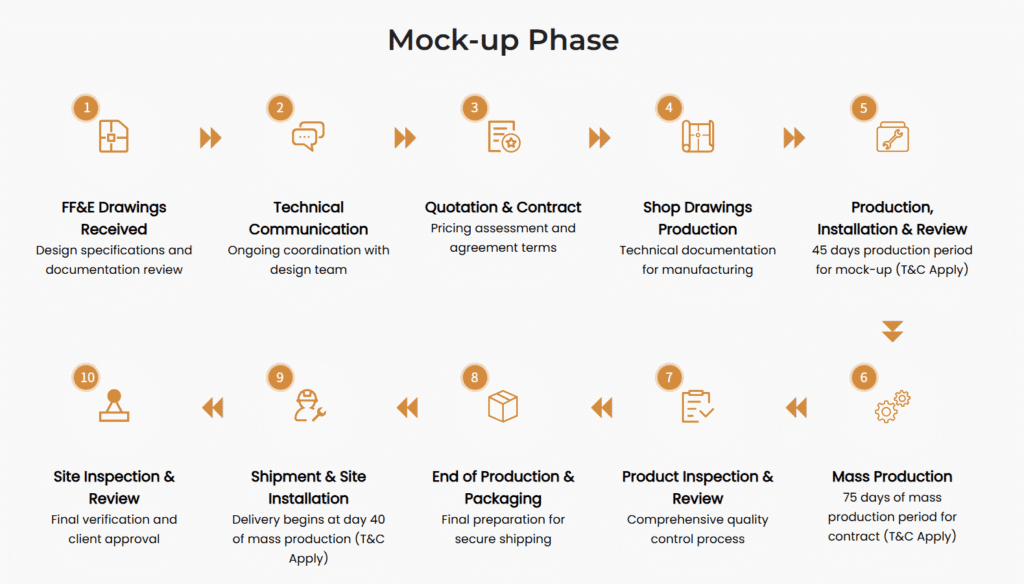
Professional furniture manufacturing companies that excel across office, healthcare, and hotel sectors develop unique capabilities that benefit all market segments through cross-pollination of innovations, economies of scale in manufacturing, and comprehensive project management expertise that can handle complex, multi-environment installations. This cross-industry expertise enables providers to apply lessons learned in one sector to challenges in others, creating innovative solutions that might not emerge from specialized manufacturers.
Innovation transfer between sectors creates opportunities for breakthrough solutions that improve functionality across different environments. Antimicrobial technologies developed for healthcare applications enhance office furniture hygiene, while ergonomic innovations from office furniture improve patient comfort in healthcare settings. Hotel furniture durability standards influence manufacturing processes that benefit all sectors through improved quality and longevity.
| Innovation Category | Origin Sector | Cross-Application Benefits | Implementation Examples |
| Antimicrobial Surfaces | Healthcare | Office hygiene, hotel cleanliness | Conference tables, lobby seating |
| Ergonomic Design | Office | Patient comfort, guest satisfaction | Healthcare seating, hotel work areas |
| Durability Standards | Hospitality | Extended lifecycles, reduced replacement costs | Office seating, healthcare casegoods |
| Technology Integration | Office | Healthcare monitoring, hotel services | Patient room furniture, guest amenities |
| Modular Systems | Office | Space flexibility, cost efficiency | Healthcare expansion, hotel renovations |
Manufacturing efficiencies achieved through multi-sector expertise enable global furniture solutions providers to offer competitive pricing while maintaining quality standards across different applications. Shared research and development costs, common manufacturing processes, and bulk material purchasing create cost advantages that benefit clients across all sectors while supporting continued innovation investment.
Conclusion
Global furniture solutions providers specializing in office, healthcare, and hotel environments offer compelling advantages through comprehensive expertise, cross-industry innovation, and integrated project management capabilities that single-sector specialists cannot match. The convergence of requirements across these three major commercial sectors creates opportunities for providers who understand the unique needs of each environment while leveraging shared innovations and manufacturing efficiencies.
Organizations seeking furniture partners for complex projects benefit from providers who can deliver consistent quality, maintain brand coherence across different environments, and apply lessons learned from diverse applications to create superior solutions. The integration of office productivity features, healthcare compliance standards, and hospitality durability requirements creates comprehensive furniture solutions that exceed single-sector capabilities.
The future of commercial furniture continues evolving toward greater specialization within broader expertise, requiring providers who can adapt to changing requirements while maintaining excellence across multiple market segments. Professional furniture manufacturing companies that invest in cross-industry capabilities position themselves to lead market development and deliver exceptional value to clients with diverse furniture requirements.
Success in today’s competitive commercial furniture market requires providers who understand that excellence in one sector enhances capabilities in others, creating synergies that benefit all clients through improved innovation, quality, and cost-effectiveness. Organizations should prioritize furniture partners who demonstrate comprehensive expertise across multiple commercial sectors while maintaining specialized knowledge required for their specific applications.
Frequently Asked Questions
What advantages do cross-industry furniture providers offer compared to specialized manufacturers?
Cross-industry providers leverage innovations across different sectors, creating superior solutions through technology transfer and shared expertise. Healthcare antimicrobial technologies enhance office hygiene, while office ergonomic innovations improve healthcare patient comfort. Manufacturing efficiencies from serving multiple sectors enable competitive pricing without sacrificing quality. These providers also offer integrated project management for complex installations involving multiple environments, reducing coordination complexity and ensuring consistent quality standards. Their broader experience base enables them to anticipate requirements and provide solutions that single-sector specialists might not consider, resulting in more comprehensive and cost-effective furniture programs.
How do global furniture providers ensure compliance across different regulatory environments?
Global providers maintain specialized teams that understand regulatory requirements for office, healthcare, and hospitality environments, including OSHA workplace safety standards, FDA medical device regulations, and international fire safety codes for hotels. They invest in comprehensive testing facilities and certification processes that ensure products meet or exceed applicable standards. Their multi-sector experience provides deeper understanding of compliance requirements and enables them to design products that meet multiple standards simultaneously. Regular training programs keep staff current on evolving regulations, while established relationships with certification bodies streamline approval processes for new products and international markets.
What should organizations consider when evaluating multi-sector furniture providers?
Organizations should assess providers’ demonstrated expertise in their specific sector while evaluating cross-industry capabilities that could benefit their projects. Key considerations include sector-specific certifications, relevant project portfolios, manufacturing capabilities that support required quality standards, and project management systems capable of handling complex installations. Financial stability ensures ongoing support and warranty coverage, while innovation capabilities indicate future value potential. References from similar projects provide insights into actual performance, and facility tours demonstrate manufacturing capabilities and quality control systems. Global reach becomes important for organizations with multiple locations or international operations.
How do manufacturing efficiencies from multi-sector operations benefit customers?
Multi-sector manufacturers achieve economies of scale through shared research and development costs, bulk material purchasing, and common manufacturing processes that reduce per-unit costs while maintaining quality standards. These efficiencies enable competitive pricing across all sectors while supporting continued innovation investment. Shared quality standards mean healthcare-level testing benefits office and hotel furniture, while hospitality durability requirements enhance products across all sectors. Manufacturing flexibility allows providers to adapt quickly to changing requirements and offer customization options that specialized manufacturers might find cost-prohibitive. These efficiencies ultimately translate to better value, higher quality, and more innovative solutions for customers.
What role does technology integration play in modern commercial furniture across different sectors?
Technology integration varies by sector but increasingly converges around common themes of connectivity, monitoring, and user interface capabilities. Office furniture incorporates power distribution, wireless charging, and IoT sensors for space utilization analytics. Healthcare furniture features integrated monitoring systems, patient entertainment platforms, and medical device interfaces. Hotel furniture includes charging capabilities, smart room controls, and guest service interfaces. Multi-sector providers leverage these overlapping requirements to develop integrated technology platforms that can be adapted for different applications, reducing development costs while providing cutting-edge capabilities. This convergence enables furniture to support digital transformation initiatives across all commercial environments while maintaining sector-specific functionality.
How do sustainability initiatives impact furniture solutions across office, healthcare, and hotel environments?
Sustainability requirements increasingly align across all three sectors, with organizations pursuing LEED certification, carbon footprint reduction, and circular economy principles regardless of industry. Multi-sector providers develop comprehensive sustainability programs that achieve certifications like GREENGUARD for indoor air quality, Forest Stewardship Council for responsible sourcing, and Cradle to Cradle for lifecycle management. These providers implement take-back programs for end-of-life furniture, use recycled content in manufacturing, and design for disassembly to support circular economy goals. Healthcare’s emphasis on environmental health, office wellness trends, and hospitality’s growing sustainability focus create aligned requirements that enable providers to develop unified sustainability strategies that benefit all sectors while achieving economies of scale in sustainable material sourcing and manufacturing processes.


